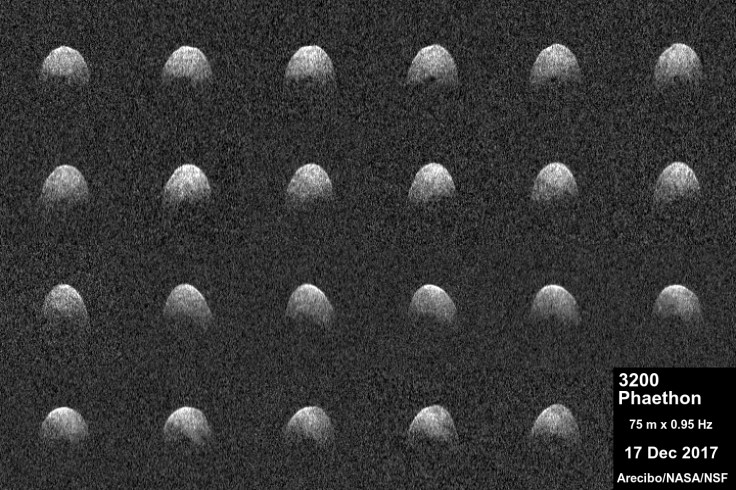Arecibo radio telescope captures massive, potentially hazardous asteroid in breathtaking images
The asteroid, 3200 Phaethon, made a close approach to Earth a few days after the glorious Geminid meteor shower in mid-December.

After months of downtime and a series of issues, the Nasa-funded Arecibo radio telescope is back in action.
The massive instrument, which was severely affected by Hurricane Maria in September, has captured some breathtaking shots of 3200 Phaethon – the weird, potentially hazardous asteroid that whizzed past Earth a week back.
3200 Phaethon made a close approach to Earth a few days after the glorious Geminid meteor shower in mid-December. The asteroid, believed to be the parent of the shower, was captured by Arecibo as it passed at a distance of about 10.3 million kilometres, or roughly 27 times the distance between the Earth and the moon.
These prolific high-resolution images, as Nasa describes them, reveal Phaethon's spherical shape, a massive concave area on its surface, and a conspicuous dark, circular feature near one of its poles.
"These new observations of Phaethon show it may be similar in shape to asteroid Bennu, the target of Nasa's OSIRIS-REx spacecraft, but more than 1,000 Bennus could fit inside of Phaethon," said Patrick Taylor, a scientist and group leader for Planetary Radar at Arecibo Observatory. "The dark feature could be a crater or some other topographic depression that did not reflect the radar beam back to Earth."
Arecibo's observations also helped Nasa in getting a better idea of the asteroid's size. According to the agency, Phaethon is the second-largest near-Earth asteroid with a diameter of about 6 km, which not only makes it potentially hazardous but is also a kilometre larger than what has been estimated until now.
Named after the son of the Greek Sun god Helion, Phaethon was first discovered in 2007. Though it primarily looks like an asteroid, it's occasional comet-like activity has led some to suggest that could even be an inactive comet nucleus. Either way, the asteroid will not make another approach as close as this until 2093.
"Arecibo is an important global asset, crucial for planetary defence work because of its unique capabilities," said Joan Schmelz, deputy director of the observatory. "We have been working diligently to get it back up and running since Hurricane Maria devastated Puerto Rico."





















